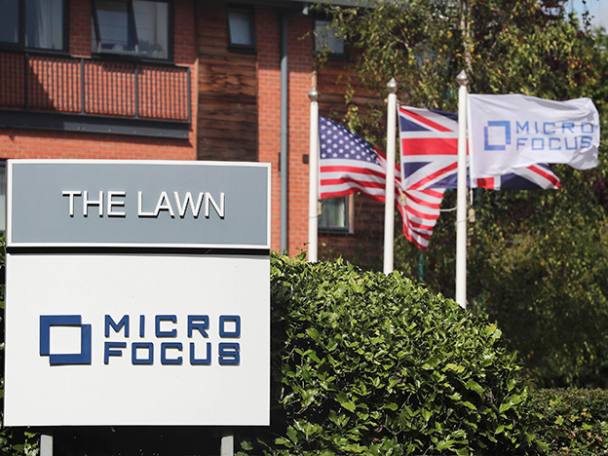Micro Focus (MCRO) was once theUK’s largest public technologycompany, with a market capitalisationof more than £9bn. For a number of years it enjoyed significant success pursuing a strategy of acquiring legacy software businesses, cutting their costs, cross-selling their products and juicing out cash. However, times have changed and now its market capitalisation stands at just over £1bn.
Good cash conversion
Potential takeover target
High net debt
Rising short interest
Weaker quality of revenues
The fall from grace has been spectacular: the company saw more than half of its value erased in just the past two years alone. And we think its share price could have further to fall – an opinion that seems to be shared by a number of hedge funds, with the 3.7 per cent disclosed short positions placing the IT firm among the25 most shorted shares in London.
Anyone who has followed Micro Focus in the past few years will not be surprised that the company is struggling to stoke enthusiasm for its prospects. Since 2017 it has been beleaguered by the fallout from its purchase of Hewlett Packard Enterprise’s (US:HPE) software business.
Put simply, the integration of HPE’s software into the rest of the business failed. And it has been an extraordinarily expensive failure, with exceptional charges expected to total $960m – of which $245m still loomed at the end of its 2019 financial year. The purchase cost a whopping $8.8bn (£6.7bn), so it is small wonder that Micro Focus’ net debt has more than doubled since 2017. Indeed, the company’s debt is now worth more than three times its market capitalisation and profits cover interest payments by less than two times.
What’s more, reliance on licence sales, maintenance work and consulting means it generates much less predictable revenues than a pure software-as-a-service (SaaS) model. In the first half of 2020, when trading was battered by the pandemic, group revenue was down 11.3 per cent as customer projects were delayed. Significantly, the company seems to be losing out to fierce competition from ‘next generation’ software companies.
There have been pockets of progress, such as Micro Focus’ efforts to reduce the high level of long-overdue invoices. Days of sales outstanding were brought down from 94 to 68 during the last financial year. This has helped cash conversion. In the first half, cash from operations represented 131.5 per cent of adjusted cash profit, and free cash flow came in at $305m. And its margins are also not derisory, with an operating profit margin of 15.2 per cent over the past 12 months, although this has more than halved over five years.
The low value of its equity may attract the attention of a larger US company as an acquisition. There were rumours in April about a public-to-private takeover, which bumped up the Micro Focus’ share price as much as 13 per cent in a single day. There is a lot of debt for any would-be bidder to take on.
| Micro Focus International (MCRO) | |||||
| ORD PRICE: | 296p | MARKET VALUE: | £987m | ||
| TOUCH: | 296-297p | 12-MONTH HIGH: | 1,627p | LOW: | 270p |
| FORWARD DIVIDEND YIELD: | 5.7% | FORWARD PE RATIO: | na | ||
| NET ASSET VALUE: | 1,501ȼ* | NET DEBT: | 86%** | ||
| Year to 31 Oct | Turnover ($bn) | Pre-tax profit ($bn)*** | Earnings per share (ȼ) | Dividend per share (ȼ) | |
| 2017 | 4.23 | 0.20 | 67 | 88 | |
| 2018 | 5.29 | 0.14 | 195 | 151 | |
| 2019 | 3.35 | 1.41 | 374 | 58 | |
| 2020*** | 3.01 | -1.11 | -328 | nil | |
| 2021*** | 2.91 | -0.08 | -54 | 22 | |
| -3 | -93 | -84 | - | ||
| Beta: | 1.9 | ||||
| *Includes intangible assets of $11bn, or 3,355ȼ a share | |||||
| **Includes lease liabilities of $265m | |||||
| ***UBS forecasts | |||||
| £1 = $1.3 | |||||









